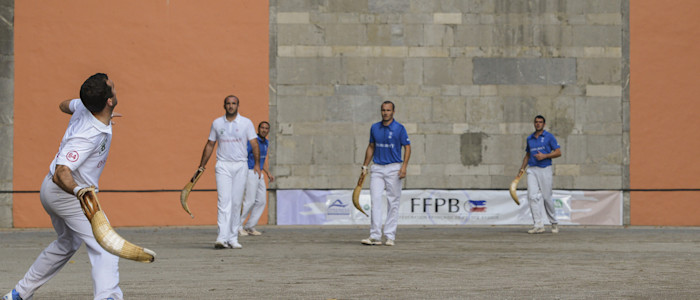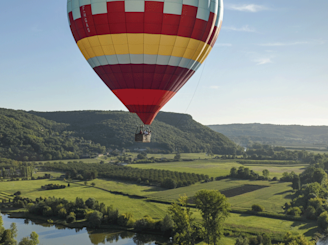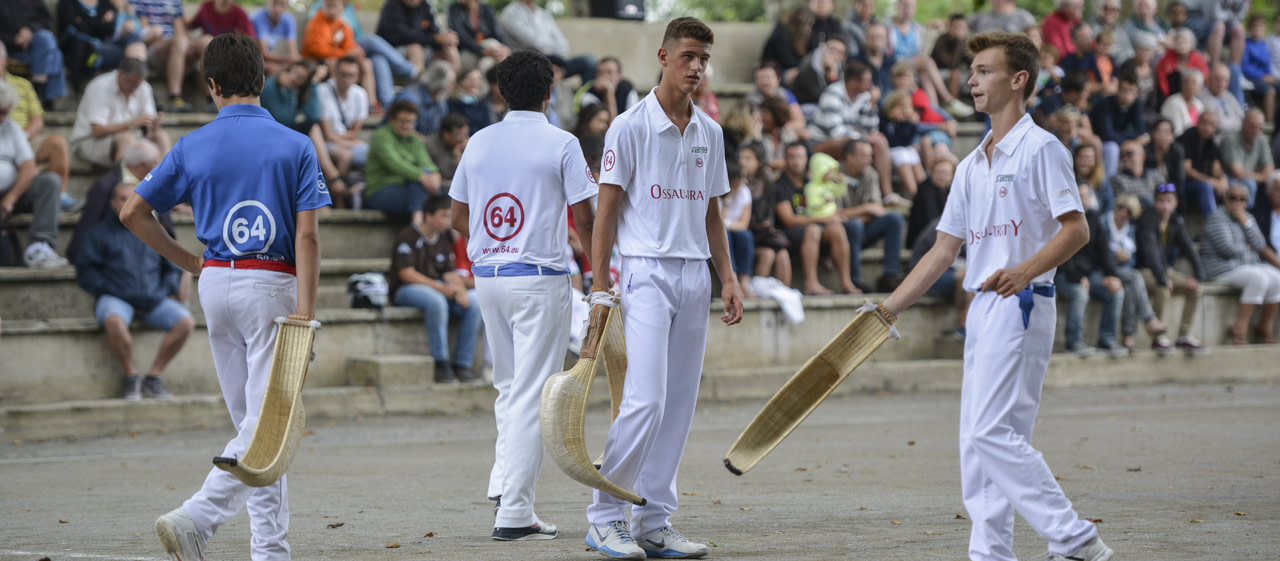A for… Angle
Pelota is a very old game which dates back to the Mayas and the Aztecs, then can be found in Europe with the Ancient Greeks. But, it was in the Basque Country that it survived. In the 18th century, Basques had the idea of using a wall and its angles to create an alternative to a game where the ball went back and forward from one team to the other. The aim? To privilege intelligence rather than strength.
E for… Esku (Basque word for “hand”)
The basis of pelota is the bare hand, known as Eskuska in Basque. All the other specializations stem from this; today, there are 18 different pelota games (Pala Corta, Xare, Cesta Punta, etc.). The chistera, for example, was invented in the 19th century by Gantxiki, a player from Saint-Pée-sur-Nivelle, who had the brainwave of using a fruit basket to play pelota without getting injured.

F for… Fronton or Frontis
Basque pelota can be played on three different pitches (or courts): the fronton (or frontis), i.e. a “simple” wall, the trinquet, surrounded by two walls, and lastly, the “mur à gauche” (wall on the left), which requires ingenuity.
“I was lucky in that I was able to play at a very high level for both trinquet and mur à gauche. Although the trinquet is really technical, I find it more interesting to build up to score using the mur à gauche”.
I for… Initiation
During the summer, in many Basque Country villages, pelota clubs propose initiation sessions. Feel free to contact the clubs for more information. Summer is also a brilliant time for watching games and tournaments with, for example, the Basque Country free-space, barehanded championship.

Q for… Quality
Intelligence is the most important quality for a pilotari (Basque pelota player). When playing barehanded, your head, hands and legs need to be in synch… You need to be strong, supple, fast, but also have a keen sense of analysis and comprehension of the game.
P for… Pelota
The pelota is a hard ball. It is made with a core of boxwood, covered with rubber, then enveloped with lengths of elastic, wool, cotton thread and, finally, goatskin. The pelota used in the barehanded game weighs between 93 and 98 grams depending on the moisture level. Its hardness is an integral feature of the game.
T for… Taco
The barehanded game is played, of course, without a glove, however the hand needs to be protected. The hand swells as the pelota (ball) impacts it repeatedly, so it has to be protected with a special dressing placed on each hand which is changed with each official round or match.
“When I was a professional player, I learned how to do them myself because my hands were like glass! It’s a really meticulous task which takes up to an hour per hand. Today, I pass on this know-how to young champions.”









